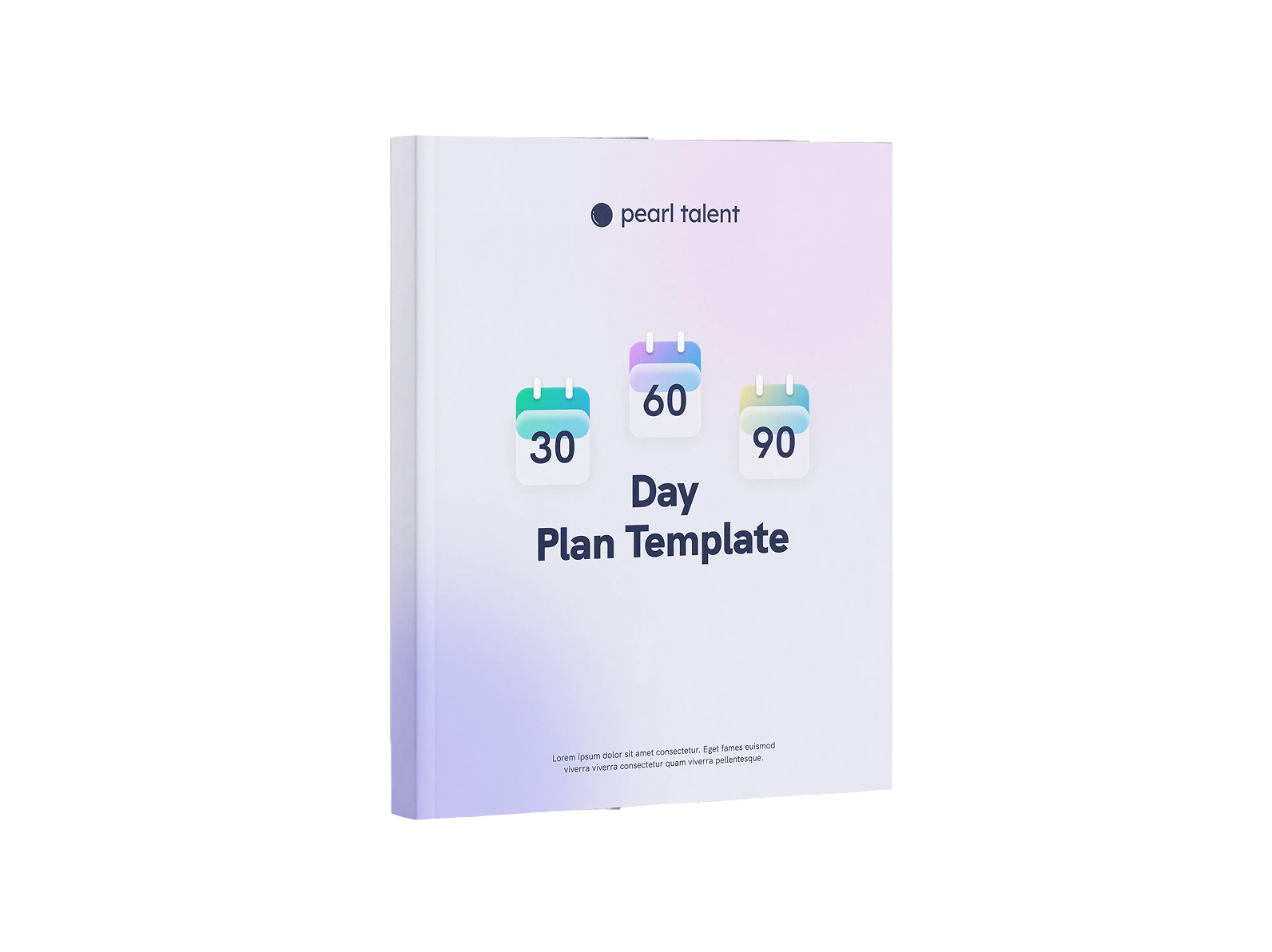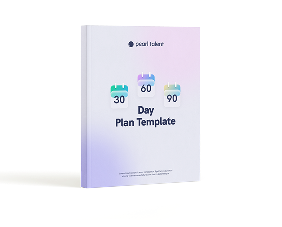Catena is now Pearl Talent! Same mission, new name.
Data analysts are a highly sought after position due to the increased importance of data-driven decision making within businesses. A great data analyst should have the ability to pull reports from multiple sources and departments, and present it to leadership in a digestible way. Because of how mission-critical a data analyst role can be for a company, it is crucial to find highly qualified and culturally fit candidates for your business.
The competition for qualified data analysts is fierce, with companies offering increasingly attractive benefits packages to secure the best candidates. But beyond competitive salaries, the key to successful hiring lies in asking the right data analyst interview questions that reveal both technical competency and business acumen.
This article presents 13 interview questions to consider while hiring for data analyst positions, complete with sample answers and insights into what makes a candidate truly exceptional. Regardless of where you are in your hiring process, these questions will help you identify candidates who can transform your business data into actionable insights.
What is a Data Analyst?
A data analyst serves as the bridge between raw business data and strategic decision-making. These professionals collect, process, and analyze large datasets to identify trends, patterns, and insights that drive business growth and operational efficiency.
Data analysts often have to wear multiple hats. They're part detective, uncovering hidden patterns in customer behavior; part consultant, translating complex findings into actionable recommendations; and part storyteller, presenting data insights in ways that resonate with stakeholders across the organization.
Data analysts have to understand what factors influence a business’s success (or failure), communicate effectively with non-technical teams, and adapt to rapidly changing technologies. They work with tools ranging from Excel and Structured Query Language (SQL) to advanced programming languages like Python and R, while also mastering visualization platforms such as Tableau and Power BI.
For businesses, the right data analyst can be transformational. They help identify new revenue opportunities, optimize operational processes, reduce costs, and provide the quantitative foundation for strategic planning. However, finding candidates who combine technical skills with business intuition and communication abilities requires a thoughtful interview approach.
Top Interview Questions to Ask Data Analysts
The following data analyst interview questions are suggested to assess both technical skills and practical problem-solving abilities. Each question serves a specific purpose in evaluating whether a candidate can deliver value in your specific business.
1. Walk me through your approach to analyzing a new dataset you've never seen before.
What to Look For: This question reveals the candidate's analytical methodology and systematic thinking. Strong answers should demonstrate a structured approach that includes data exploration, quality assessment, and hypothesis formation.
Sample Answer: "I start by understanding the business objectives and why this analysis is needed. Then I perform exploratory data analysis to understand the dataset's structure, identify missing values, outliers, and data types. I examine distributions, correlations, and basic statistics to get familiar with the data patterns. Next, I clean and prepare the data, document any assumptions or limitations, and develop hypotheses based on initial observations. Finally, I create visualizations to communicate findings and validate my analysis before presenting results."
Why This Matters: This approach shows the candidate thinks beyond just running numbers and considers the business implications of their analysis.
2. Describe a time when your data analysis led to a significant breakthrough in the business. What was the impact?
What to Look For: Look for candidates who can articulate the business case for their work and understand how data analysis translates to real-world outcomes.
Sample Answer: "At my previous company, I analyzed customer churn data and discovered that customers who didn't engage with our onboarding process within the first week had a 60% higher likelihood of canceling within three months. I presented this finding to the product team, and we implemented automated email sequences and in-app prompts for new users. This change reduced early-stage churn by 23% and increased customer lifetime value by approximately $180,000 annually."
Why This Matters: This demonstrates the candidate's ability to connect analysis with business outcomes and communicate value from everyone to board members to administrative assistants.
3. How do you handle missing or inconsistent data in your analysis?
What to Look For: Data quality issues are inevitable, so you need someone who can handle them systematically while maintaining analytical integrity.
Sample Answer: "I first assess the extent and pattern of missing data to understand if it's random or due to tool gaps or errors. For small amounts of random missing data, I might use imputation techniques like mean substitution or more sophisticated methods like multiple imputation. For systematic missing data, I investigate the root cause and document it as a limitation. I also create flags to track which records were modified and always maintain the original dataset. When presenting results, I'm always transparent about data quality issues and their potential impact."
Why This Matters: Real-world data is messy, and you need analysts who can navigate these challenges.
4. How do you determine the appropriate sample size for analysis or A/B testing?
What to Look For: This technical question assesses understanding of statistical concepts crucial for reliable business insights and that are relevant for your industry.
Sample Answer: "Sample size depends on several factors: the effect size we want to detect, desired confidence level, statistical power, and baseline conversion rates. I use power analysis calculations or online calculators to determine minimum sample sizes. For A/B tests, I typically aim for 80% power with 95% confidence. I also consider practical constraints like time limitations and traffic volume. If the required sample size is too large, I might look for ways to increase the effect size or accept lower statistical power while being transparent about the trade-offs."
Why This Matters: Proper sample sizing ensures reliable results and prevents wasting resources on inconclusive tests.
5. Describe your experience with data visualization. What principles guide your chart selection?
What to Look For: Data visualization skills are crucial for communicating insights effectively to business stakeholders and other team members who may not be as technically savvy.
Sample Answer: "I choose visualizations based on the data type and the story I'm trying to tell. For trends over time, I use line charts. For comparisons between categories, bar charts work well. For showing relationships, scatter plots are effective. I follow principles like avoiding 3D charts that can mislead, using consistent colors and scales, and ensuring accessibility for colorblind viewers. I also consider my audience. Executives might prefer high-level dashboards with key metrics, while analysts need detailed charts they can explore. The goal is always clarity and actionability."
Why This Matters: Not being able to accurately present and display data can lead to misunderstandings and uninformed decisions being made. Regardless of how good the underlying data analysis is, data analysts need to be able to showcase the impact the data will have on the business to relevant leadership and team members.
6. How do you validate the accuracy of your analysis before presenting results?
What to Look For: Quality assurance processes show attention to detail and professionalism that's crucial for business-critical decisions.
Sample Answer: "I have several validation steps: First, I check data integrity by comparing totals and counts against source systems. I perform sanity checks: do the results make logical sense? I often analyze data from different angles or use alternative methods to verify findings. Peer review is valuable when possible and relevant. I also test my code with known datasets where I expect specific outcomes. Finally, I document my methodology and assumptions so others can review and reproduce the analysis, and to reference back to for future analyses."
Why This Matters: Incorrect analysis can lead to poor decisions and money wasted, so validation processes are crucial.
7. Tell me about a time someone disagreed with your analysis. How did you handle it?
What to Look For: This assesses communication and problem-solving skills, and the ability to handle challenging situations while maintaining analytical integrity.
Sample Answer: "I once analyzed marketing campaign performance and found that our highest-spending channel had negative ROI when accounting for customer lifetime value. The marketing team initially pushed back, citing high conversion rates. I walked them through my methodology, showed how I calculated LTV, and presented the data in different ways to help them understand. We discovered they were optimizing for quantity of conversions rather than quality. Together, we developed new KPIs that better aligned with business objectives, and they adjusted their strategy accordingly."
Why This Matters: Data analysts often deliver unwelcome news and must be able to stand behind their analysis while working collaboratively with stakeholders.
8. How do you stay current with new tools and techniques in data analysis?
What to Look For: The data field evolves rapidly, so continuous learning is essential for long-term success.
Sample Answer: "I regularly read industry publications like Towards Data Science and follow key figures on LinkedIn. I champion continuous learning by participating in online communities. I stay up-to-date by taking online courses and I recently completed a machine learning specialization to better understand predictive modeling applications. I try to experiment or demo new tools on personal projects before bringing them into work environments. Additionally, I find that teaching others through internal presentations helps solidify my own understanding of new concepts."
Why This Matters: Technology and best practices in data analysis evolve quickly, and you need someone who can grow, understand and make recommendations to your business based off of these changes.
9. Describe your experience with database systems and SQL. Can you walk through a complex query you've written?
What to Look For: SQL proficiency is necessary for any data analyst role because it’s how analysts access and manipulate data.
Sample Answer: "I'm proficient in SQL and work regularly with PostgreSQL and MySQL. Here's an example of a complex query I wrote to analyze customer segmentation: I used window functions to calculate running totals of customer purchases over time, CTEs to organize the logic clearly, and joins across multiple tables including customers, orders, and products. The query included CASE statements for categorizing customers into segments based on recency, frequency, and monetary value. I also used date functions to create cohort analyses showing how customer behavior changed over time."
Why This Matters: SQL skills directly impact an analyst's ability to independently access and manipulate data, reducing bottlenecks in the analysis process. If you are not familiar with SQLs, do you research ahead of time as the interviewer so you would best understand how this is relevant for your business.
Top Python Interview Questions for Data Analysts
Python has become increasingly important for data analysis, offering powerful libraries for data manipulation, statistical analysis, and machine learning. These are some questions you might ask in a second or third round interview that should be saved for someone who is already proficient in Python. Here are key Python-focused interview questions for data analyst positions:
10. How do you use pandas for data manipulation? Can you describe some key functions?
What to Look For: Pandas proficiency indicates ability to handle complex data transformations efficiently.
Sample Answer: "Pandas is my go-to library for data manipulation. Key functions I use regularly include groupby() for aggregations, merge() and join() for combining datasets, pivot_table() for reshaping data, and apply() for custom transformations. I use loc and iloc for data selection, fillna() and dropna() for handling missing values, and str accessor methods for text processing. For time series analysis, I rely on resample() and date functionality. The DataFrame structure makes it easy to perform complex operations that would be cumbersome in SQL alone."
Why This Matters: Pandas proficiency significantly increases productivity and enables more sophisticated analysis workflows.
11. Explain how you would handle a large dataset that doesn't fit in memory using Python.
What to Look For: This tests understanding of performance optimization and scalability considerations.
Sample Answer: "Several approaches work depending on the situation: I can use chunksize parameter in pandas read_csv() to process data in smaller batches. For more complex operations, I might use Dask, which provides pandas-like functionality for larger-than-memory datasets. I could also optimize memory usage by selecting only necessary columns, using appropriate data types, and filtering data early in the process. For very large datasets, I might move the processing to a database using SQL, or use cloud-based solutions like BigQuery. The key is understanding the analysis requirements and choosing the most efficient approach."
Why This Matters: Modern businesses generate massive datasets, and analysts need strategies for handling data at scale.
12. How do you create effective data visualizations using Python libraries?
What to Look For: Visualization skills in Python complement business intelligence tools and enable custom analysis presentations.
Sample Answer: "I primarily use matplotlib for basic plots and seaborn for statistical visualizations, as it provides better default styling and specialized plot types. For interactive visualizations, I use plotly, which is great for dashboards and exploratory analysis. I always start by understanding what story the data tells, then choose appropriate chart types. I customize colors, labels, and formatting to match business requirements and ensure accessibility. I also use subplots and figure composition to create comprehensive analysis reports that can be shared with stakeholders."
Why This Matters: Python visualization capabilities allow for custom, automated reporting and more sophisticated analysis presentations.
13. How do you ensure code quality and reproducibility in your Python analysis?
What to Look For: Professional coding practices are essential for reliable, maintainable analysis workflows.
Sample Answer: "I use version control with Git to track changes and collaborate with team members. I structure my projects with clear directory organization and use virtual environments to manage dependencies. I write functions for repeated operations and include docstrings for documentation. I use Jupyter notebooks for exploratory analysis but convert to Python scripts for production workflows. I include unit tests for critical functions and use logging to track execution. Configuration files help make analysis parameters adjustable without code changes. Clear commenting and meaningful variable names make code readable for future maintenance."
Why This Matters: Code quality practices reduce mistakes, encourage collaboration, and ensure analysis can be reproduced and validated.
How to Prepare
As the Interviewer
Preparing for data analyst interviews requires understanding both the technical requirements and business context of the role. Start by clearly defining the specific skills and experience levels needed for your position. Consider whether you need someone who can work independently or as part of a larger analytics team, and whether the role requires more technical depth or business communication skills, or whether the role will be in-person, hybrid, or remote. If you are considering using offshore or nearshore support, think about time zone differences or team compatibility.
Create a consistent evaluation framework that allows you to fairly compare candidates across multiple dimensions. Technical skills are important, but don't overlook soft skills like communication, problem-solving approach, and cultural fit. Consider bringing a current data analyst or technical team member into the interview process to help evaluate technical responses and ask follow-up questions.
Prepare realistic scenarios based on your actual business challenges. Present candidates with problems similar to what they'll face in the role. This gives you better insight into their practical problem-solving abilities and helps candidates understand the position better.
Plan your interview timeline to allow sufficient time for both technical assessment and cultural fit evaluation. Consider using a multi-stage process that might include a technical screening, case study presentation, and final interview with key stakeholders who would work with the analyst. Also, be sure to leave plenty of time for your candidate to ask questions.
As the Interviewee
If you're a data analyst preparing for interviews, focus on developing compelling stories that demonstrate your impact on business outcomes and decisions. Practice explaining technical concepts in simple terms that non-technical stakeholders can understand. This skill is crucial for most data analyst roles and often differentiates strong candidates.
Be ready to showcase both your analytical thinking and technical skills. Have specific examples ready to cite of end-to-end projects that show your process from data collection through insight and recommendation to stakeholders. Be prepared to walk through your methodology and explain your decisions at each step.
Stay current and proficient in tools, but focus on depth over breadth. It's better to demonstrate strong proficiency in key tools like SQL, Python, and a visualization platform than to claim familiarity with dozens of technologies. Be honest about your experience level and show eagerness to learn, grow and test new tools.
Research the company, industry and interviewers before the interview. Understanding their business model, key metrics, and competitive landscape will help you ask intelligent questions and position your experience relevantly. Doing some background research on your interviewers may help you understand the capacity at which you will work for them and to ask thoughtful questions. This preparation demonstrates genuine interest and helps you evaluate whether the opportunity aligns with your career goals.
Be prepared for both technical questions and behavioral questions. You don’t want to sound like a robot during your interviews, so be sure you can authentically communicate your problem-solving approach, communication style and ability to work with diverse and cross-functional team members.Many data analyst roles require significant collaboration, so interpersonal skills are often as important as technical capabilities.
Final Thoughts
Hiring the right data analyst can transform your business's decision-making capabilities and drive significant revenue growth and competitive advantages. The interview questions and approaches outlined in this guide will help you identify candidates who combine technical competency with great presentation and communication skills.
The best data analysts go beyond their technical skills to present digestible information and communication insights effectively to support and drive positive business outcomes. They approach problems with curiosity and rigor. Look for candidates who can demonstrate these qualities through specific examples and who show genuine enthusiasm for turning data into actionable business value.
Taking time to prepare for your interview with your colleagues will pay dividends through reduced turnover, faster time-to-hire and better return-on-investment. Take time to evaluate candidates holistically, considering not just what they know today but their potential for growth and contribution to your organization's long-term success.
As data analyst jobs continue to grow in demand and complexity, the most valuable analysts will be those who combine strong foundational technical skills with adaptability and continuous learning. By using these interview questions and preparation strategies, you'll be well-positioned to identify and attract top data analytics talent that can drive your business forward in 2025 and beyond.
If you've had trouble finding top data analytics talent, Pearl Talent specializes in connecting businesses with pre-vetted, skilled data analysts who have been rigorously vetted for technical competencies and soft-skills. Our comprehensive vetting process ensures you receive candidates who not only excel in technical skills but also understand how to translate data insights into meaningful business outcomes. Book a consultation today to get access to the top 1% of talent globally.
Frequently Asked Questions
Originally Published
October 15, 2025




.svg)


















